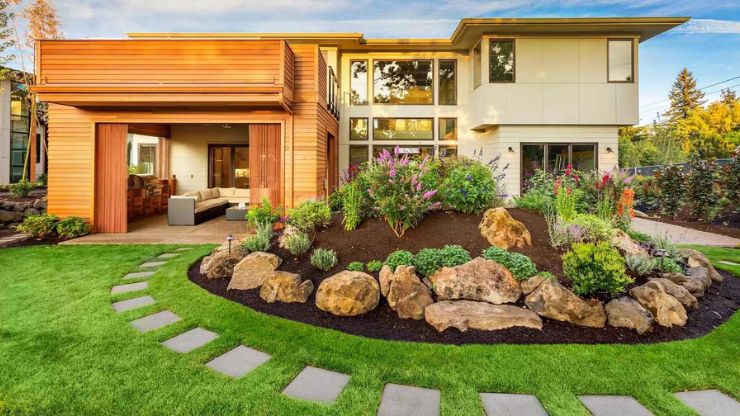Embarking on the journey of garden design is akin to unlocking a realm of boundless creativity and natural wonder. It’s not merely about arranging plants but sculpting a living canvas that reflects your vision and rejuvenates your spirit. In this bustling world, a garden becomes more than a patch of green; it becomes a sanctuary, a refuge from the chaos, and a source of solace. Whether you’re a seasoned horticulturist or a novice enthusiast, the prospect of transforming your outdoor space into a vibrant oasis brimming with life is both exhilarating and fulfilling. Join us as we delve into seven garden design ideas that will inspire and empower you to cultivate a landscape that thrives with beauty, purpose, and harmony.
Table of Contents
ToggleGarden Design Ideas That Will Get You Growing
1. Vertical Gardening:
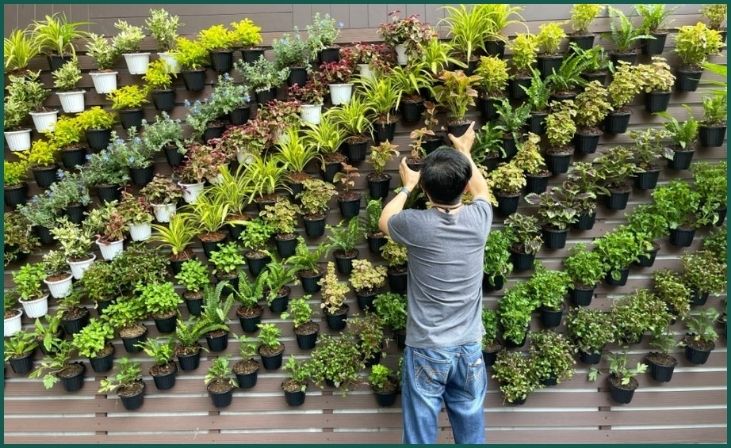
Vertical gardening is a versatile and space-efficient technique that involves growing plants upward instead of outward. By utilizing structures like trellises, arbors, or wall-mounted planters, you can maximize your growing area, especially in small spaces like balconies or urban gardens. This approach not only allows you to grow a variety of plants in a limited footprint but also adds visual interest and dimension to your garden.
Vertical gardens can be designed with a mix of climbing vines, flowering annuals, or even edible crops like tomatoes or herbs. Additionally, vertical gardening offers practical benefits such as better air circulation around plants, easier access for maintenance, and protection from ground-dwelling pests. Whether you’re aiming to create a lush green backdrop or a striking focal point, vertical gardening offers endless possibilities for creativity and innovation in garden design.
2. Native Plant Selection:
Choosing native plants for your garden is a sustainable and environmentally-friendly approach that offers numerous benefits. Native plants are species that naturally occur and have adapted to the local climate, soil conditions, and wildlife of a particular region. By incorporating native plants into your garden design, you can conserve water, reduce the need for pesticides and fertilizers, and promote biodiversity by providing habitat and food for native wildlife such as birds, bees, and butterflies.
Native plants are typically low-maintenance and resilient, requiring less water and care once established. Moreover, they contribute to the unique character and sense of place in your garden, reflecting the natural beauty and diversity of your local ecosystem. Whether you’re creating a wildflower meadow, a woodland garden, or a coastal landscape, native plant selection is key to creating a thriving and sustainable garden that celebrates the beauty of your region.
Also Read : 8 Essential Tips for Growing Tomato Plants in Pots
3. Edible Landscaping:
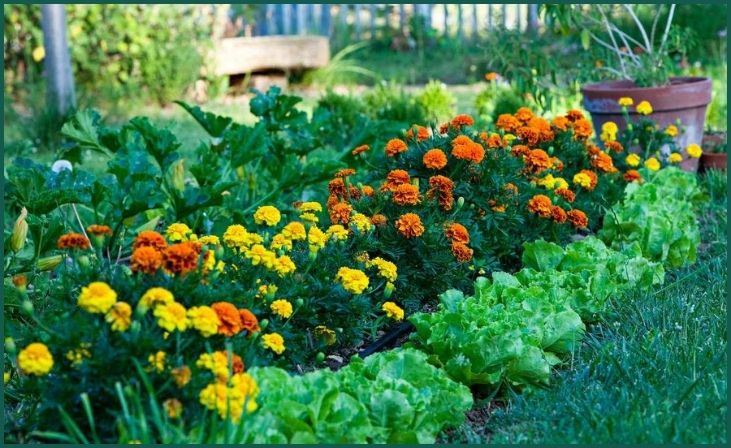
Edible landscaping is a creative and practical approach to garden design that combines ornamental plants with edible crops to create a beautiful and productive landscape. Instead of segregating edible and ornamental plants into separate areas, edible landscaping integrates them seamlessly, blurring the boundaries between traditional flower beds and vegetable gardens. This approach allows you to grow a wide range of fruits, vegetables, herbs, and edible flowers alongside your favorite ornamental plants, maximizing both aesthetic and culinary appeal.
Whether you have a sprawling backyard or a small urban plot, edible landscaping offers endless possibilities for creating a sustainable and bountiful garden that not only nourishes the body but also delights the senses. From edible borders and raised beds to fruit-bearing trees and shrubs, there are countless ways to incorporate edible plants into your garden design and enjoy the fruits of your labor year-round.
4. Water-Wise Design:
Water-wise design, also known as xeriscaping, is a landscaping approach that emphasizes water conservation and drought tolerance. By designing your garden with water efficiency in mind, you can reduce water consumption, minimize irrigation needs, and create a sustainable and resilient landscape that thrives in dry conditions. Water-wise design principles include selecting drought-tolerant plants, improving soil quality and structure, mulching to retain moisture, and maximizing rainwater capture and storage.
Don't just scroll, subscribe!
BuzzTrail's unique web-stories are the cure for boredom you've been waiting for.
By incorporating these strategies into your garden design, you can create a beautiful and functional landscape that conserves water resources, supports biodiversity, and withstands the challenges of climate change. Whether you live in a arid climate or simply want to reduce your water bills and environmental footprint, water-wise design offers practical solutions for creating a thriving garden that’s both eco-friendly and visually stunning.
5. Pollinator-Friendly Plants:
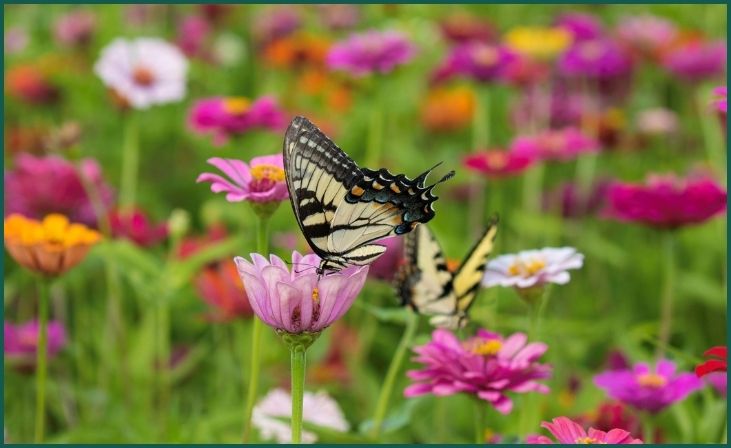
Pollinator-friendly plants are species that provide nectar, pollen, and habitat for bees, butterflies, hummingbirds, and other pollinating insects. By planting a diverse array of flowering plants, shrubs, and trees that attract and support pollinators, you can enhance biodiversity, promote ecosystem health, and increase fruit and seed production in your garden. Pollinator-friendly plants come in a variety of shapes, sizes, and colors, offering endless options for creating a vibrant and pollinator-friendly landscape.
When selecting plants, choose species that bloom at different times throughout the growing season to provide a continuous food source for pollinators. Additionally, incorporate a mix of native and non-native plants to ensure a diverse and resilient habitat that meets the needs of a wide range of pollinator species. Whether you’re planting a butterfly garden, a bee-friendly border, or a hummingbird haven, pollinator-friendly plants are essential for creating a thriving and biodiverse garden that benefits both wildlife and humans alike.
6. Seasonal Interest:
Designing your garden for seasonal interest ensures that there’s something beautiful to see and enjoy in every season, from spring through winter. By selecting plants that offer different colors, textures, and forms throughout the year, you can create a dynamic and ever-changing landscape that delights the senses and adds visual appeal to your outdoor space. Start by identifying plants that bloom or display vibrant foliage during each season, from early-blooming bulbs and spring-flowering shrubs to summer perennials and fall foliage plants.
Incorporate evergreen trees and shrubs to provide structure and color during the winter months, ensuring that your garden remains visually appealing even when other plants are dormant. Additionally, consider incorporating seasonal elements such as flowering bulbs, ornamental grasses, and seasonal containers to add interest and variety to your garden design. Whether you’re planting a cottage garden, a formal landscape, or a contemporary urban oasis, designing for seasonal interest ensures that your garden remains beautiful and engaging year-round.
Also Read : 7 Deer-Resistant Flowers For Sun
7. Functional Zones:
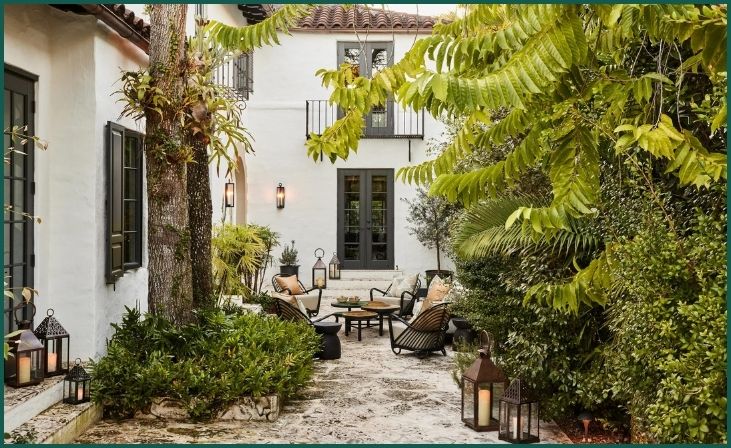
Creating functional zones within your garden allows you to organize and utilize your outdoor space more effectively, catering to different activities, needs, and preferences. By dividing your garden into distinct areas for dining, entertaining, relaxation, or play, you can maximize usability and enjoyment while maintaining visual coherence and flow throughout the space. Start by assessing your needs and lifestyle to determine which zones are essential for your garden design. Common functional zones include dining areas with tables and chairs, lounging areas with comfortable seating and shade structures, and play areas with play equipment or recreational features.
Use landscaping elements such as pathways, hedges, or pergolas to delineate boundaries between zones while creating a sense of intimacy and enclosure. Additionally, consider incorporating versatile furniture, lighting, and accessories to enhance functionality and create a welcoming atmosphere in each zone. Whether you’re hosting a garden party, enjoying a quiet meal al fresco, or playing with your children, functional zones ensure that your garden meets your needs and accommodates your lifestyle with style and sophistication.
Conclusion
As we conclude our exploration of garden design ideas, it’s clear that the possibilities are as endless as the imagination. By embracing concepts such as sustainability, functionality, and biodiversity, you can transform your outdoor space into a haven of beauty and tranquility. Let your garden not only delight the senses but also nourish the soul, fostering a deeper connection with nature and creating lasting memories for years to come. Remember, gardening is a journey, not a destination, so embrace experimentation, learn from setbacks, and revel in the joy of watching your garden flourish. With dedication, passion, and a touch of creativity, you can truly unlock the full potential of your outdoor oasis and experience the transformative power of nature firsthand.
FAQs
What are some creative ways to incorporate art into garden design?
What are some creative ways to incorporate art into garden design?
Consider installing sculptures, mosaics, or murals, or repurpose salvaged materials into artistic focal points that complement your garden’s theme.
How do I create a child-friendly garden?
How do I create a child-friendly garden?
Designate a dedicated play area with soft surfacing, incorporate sensory plants and interactive elements, and prioritize safety by avoiding toxic plants and sharp edges.

